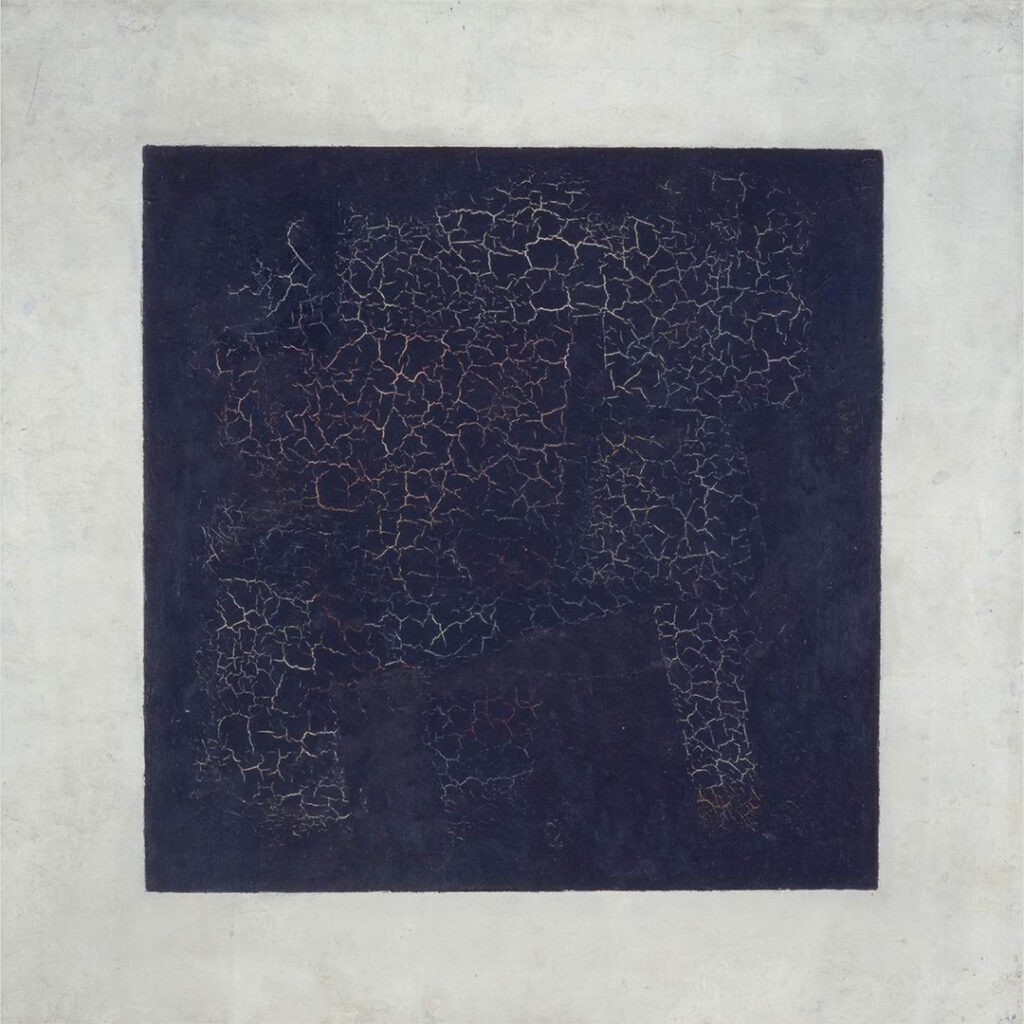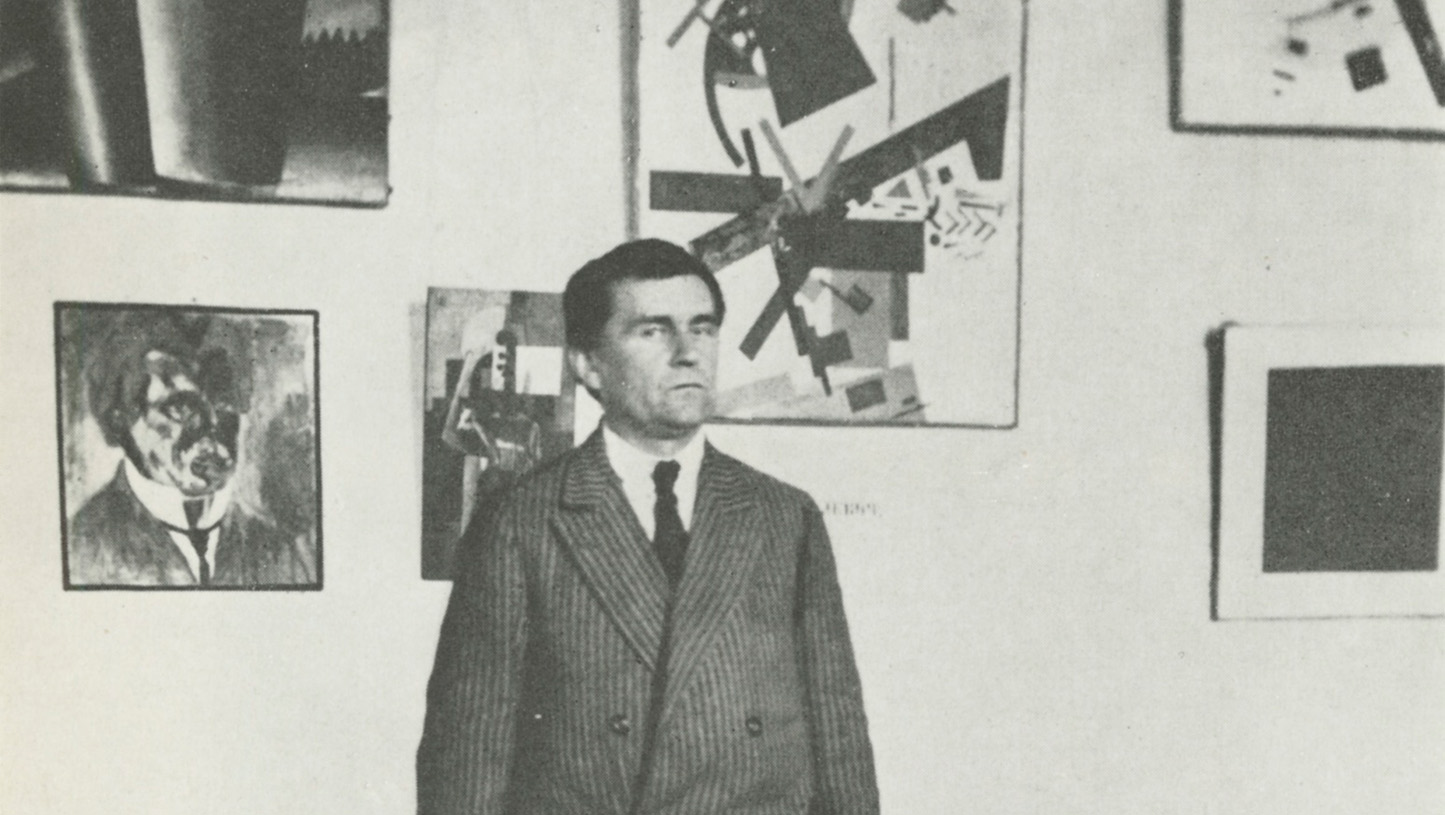Kazimir Malevich, most likely at the Museum of Artistic Culture, Petrograd, 1924. Public domain, via monoskop.org.
The Revolutionary Who Painted Himself Back into a Corner
The Black Square Revolution
In 1915, Kazimir Malevich painted a black square on a white canvas and called it art. Critics were baffled. The public was outraged. Malevich had thrown out everything art was supposed to be: no story, no recognizable objects, no pretty landscapes or noble portraits. Just pure form and color.
It was one of the most radical artistic statements ever made.
“Black Square” opened a door to entirely new possibilities in human expression. Abstract art was born. Malevich had proven that art could be about pure emotion and idea, freed from the need to copy the visible world.
When Fear Won
But by the early 1930s, Stalin’s cultural enforcers had decided modern art was bourgeois corruption. Artists who wanted to survive needed to paint realistic workers and peasants, heroic farmers and smiling party officials.
So Malevich, the man who had revolutionized art, went backwards. He painted representational works to stay alive. The radical who had created the future of art was forced to pretend that future had never existed.
The Cultural Cost
The cultural loss is staggering. We’ll never know what Malevich might have discovered if he’d been free to keep pushing forward. He had opened a door to something completely new, then was forced to walk back through it and nail it shut.
This is what happens when creative freedom gets strangled. It doesn’t just silence the individual artist. It silences whatever movements might have grown from their continued innovation. It cuts off entire branches of cultural evolution before they can flower.
Malevich’s story shows us the stakes. When artists self-censor out of fear, when they retreat from authentic expression to avoid consequences, entire cultures lose their capacity for renewal. They get trapped repeating approved themes instead of discovering new ones.
The man who painted a black square that changed art forever ended up painting propaganda portraits. That’s not just personal tragedy. That’s cultural death.
Creative freedom isn’t a luxury. It’s the oxygen that keeps cultures alive.
Randall White
Abbetuck
Read the complete Creative Freedom series:
- When Jazz Found Its Voice in a Funky Dance Hall
- The Poet Who Wrote in Blues and Called It Literature
- The Woman Who Painted Flowers Like Monuments
- One Small Act of Creative Courage You Can Take Today

Kazimir Malevich
Black Square (Black Suprematic Square), 1915. Tretyakov Gallery, Moscow. Courtesy of the Tretyakov Gallery / Wikimedia Commons.




No responses yet